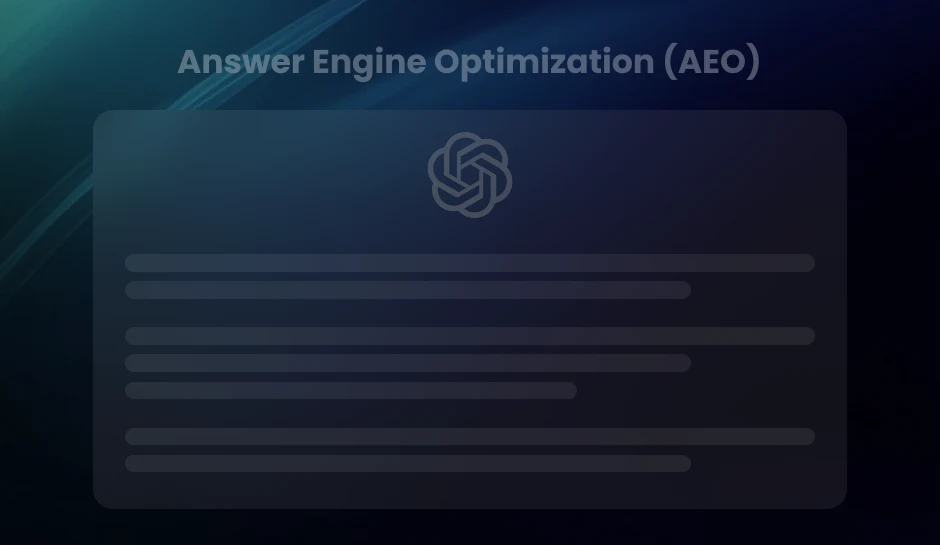
Prominent Data Analytics Challenges And How To Fix Them
In this blog, we have elaborately discussed the challenges faced by data analysts and marketers while dealing with large datasets. We have also suggested a viable solution for these challenges to increase the efficacy and accuracy of the deduced outcomes.
Are you a marketer or data analyst struggling with the data analytics challenges encountered while carrying out significant marketing and analytical operations? If yes, we have got your back. Here we have acknowledged, highlighted, and discussed some of the most prominent limitations faced by marketers and data analysts while suggesting some reliable and applicable solutions for them.
So, let us get started and learn more about data analytics challenges and find an adequate approach, tool, or method to efficiently deal with them.
Brief Introduction to Data Analytics
Before starting the main discussion let us quickly go through the basics of data analytics and get an overall understanding of it.
Data analytics is essentially the process of synthesizing raw data to extract reliable and useful information. It helps businesses utilize data to enhance the effectiveness of their marketing efforts by making targeted approaches and data-driven decisions. The various approaches and methods adopted by analysts and marketers to perform this rather intricate and complex task include descriptive analytics, predictive analytics, prescriptive analytics, and customer analytics, which focuses on understanding customer behavior and preferences.
The involvement of enormous data sets and the complexity faced while dealing with them and transforming them into useful and informative pieces of data imposes various challenges.
“Tim McGuire of McKinsey has subsequently defined the data analytics challenges as deciding which data to use, handling analytics, and using the insights you have gained to transform operations.
While all these challenges are very real, they do not fully describe the big data challenge, which are choosing, synthesizing, analyzing, interpreting, and acting operationally and strategically.”– nist.gov
Common Data Analytics Challenges and How to Overcome Them
“Tim McGuire of McKinsey has subsequently defined the data analytics challenges as deciding which data to use, handling analytics, and using the insights you have gained to transform operations.
While all these challenges are very real, they do not fully describe the big data challenge, which are choosing, synthesizing, analyzing, interpreting, and acting operationally and strategically.”– nist.gov
Let us begin discussing some of the widely faced data analytics challenges and learn how they can be dealt with optimum ease and efficacy.
Unbound Availability and Amounts of Data
The immense availability of data might not appear as a problem initially, but as you start processing or dealing with the unbound data sets, the limitations and challenges become increasingly apparent. With the continuous flow of data coming from various channels and sources, it becomes difficult for analysts to organize or comprehend data and fully utilize it to make adequate or precise predictions. Generating accurate reports amidst this flood of information can be particularly challenging.
The best way to deal with this data analytics challenge would be to take the help of a data analytics software or platform. Such platforms come in handy while collecting, organizing, and categorizing datasets without any conflict or confusion.
Identifying Meaningful Data
Another data analytics challenge that is prominently faced by marketers and data analysts is the identification or extraction of relevant and real-time information from the overwhelmingly enormous pile of data. The manual handling of this task appears quite strenuous or exhausting and requires a lot of time and effort, particularly when considering data storage and sales data management.
A reliable and high-end data analytics software will make this task seamless and simplified while enhancing the accuracy and efficiency of the outcomes. It will also help you create real time reports that will make it accessible to make yielding data-driven decisions. Additionally, it supports your workforce by providing tools that improve data analysis and decision-making processes.
The time and energy saved by using these AI-empowered tools can be invested in performing other significant business operations.
Turning Insight into Impact
Identifying patterns, trends, and anomalies through analytics delivers value only when organizations translate those insights into clear decisions. However, many analytics projects stall at the final stretch. The results sit in dashboards or reports without ever influencing change.
Three barriers typically block the path from insight to execution:
- Misaligned goals between data teams and decision-makers:
- Overcomplex output:
- Lack of operational integration:
Analysts may optimize dashboards for technical accuracy while executives need outcome-focused narratives.
Reports saturated with jargon, metrics, or visual clutter overwhelm stakeholders instead of guiding them.
Insights often live in isolated tools, not integrated into workflows, KPIs, or processes where decisions are made daily.
Creating Actionable Reports and Visualizations that Drive Decisions
Actionability depends on design choices made during reporting. Not just what data gets shown, but how it’s structured, prioritized, and styled.
- Start every report with a decision in mind: what should be done differently after seeing the data?
- Apply narrative techniques such as annotations, guided storytelling, or cohesive color schemes to emphasize signal over noise.
- Use business-specific framing—metrics must map to goals, pain points, or KPIs familiar to department leads or executives.
- Limit dashboards to a core set of metrics directly tied to controllable levers; avoid vanity metrics or unrelated analytics.
- Embed reports in the tools and platforms decision-makers already use: CRMs, workflow tools, executive portals.
Best Practices for Ensuring Insights Lead to Informed Business Actions
Access means little without adoption. Several execution strategies guarantee that insights do more than inform—they instigate measurable change:
- Establish ownership:
- Set trigger thresholds:
- Leverage scenario modeling:
- Create regular data-to-action reviews:
Assign responsible parties for acting on each key metric within a dashboard or report. Accountability closes feedback loops.
Determine numerical cutoffs that define when action is required. For example, if churn probability rises above 60%, initiate customer retention workflows immediately.
Instead of static metrics, simulate outcomes based on potential actions. Let users experiment with variables affecting revenue, cost, or performance.
Incorporate analytics discussions into weekly or monthly business meetings. Highlight what decisions were made based on past reports and their outcomes—establish a culture of follow-through.
Comprehensive Data Visualization
The next step after processing data successfully, is to present the deduced results, statistics, or outcomes in a comprehensive and cohesive manner. It is another challenging part of the data analytics process. However, it can be easily dealt with by using advanced data analytics and visualization tools.
Such tools make data visualization more systematic, organized, appealing, and easy to understand. They are capable of presenting the KPI metrics that often go unnoticed during manual handling. You can also use these software or tools to present real-time data in an orderly manner.
Pro Tip- While handling data, you must always be aware of the business objectives and shortcomings you mean to target by accessing related data. Using data analytics tools can be of great help in identifying the loopholes in the existing strategies.
Acquiring Data from Multiple Sources
Marketers generally have a tough time collecting data from multiple sources to learn about the customers’ demographics and gauge the presence or performance of the business across channels. It becomes challenging for them to keep monitoring the sources continuously to get their hands on high-quality data sets.
Relying on a data analytics tool helps businesses accumulate the required information, statistics, and data from all the relevant sources with unmatched ease and efficiency.
Cost Management and Budget Constraints in Data Analytics
Data analytics can yield transformative business insights, but the financial investment associated with these projects requires scrutiny. Budget holders don’t just look at upfront costs; ROI remains the dominant metric. When organizations align analytics efforts with strategic goals, such as optimizing supply chains, reducing churn, or improving product-market fit, the financial rewards can justify and exceed the initial spend.
According to a 2023 Gartner report, organizations that tie analytics investments directly to measurable business outcomes are 2.6 times more likely to generate actionable insights that get implemented at scale. Projects without clear ROI benchmarks tend to stall or get shelved early due to cost overruns or unclear value propositions.
Exposing Hidden Costs
Initial estimates often fail to account for hidden expenses that surface mid-project. Licensing fees for advanced analytics platforms, cloud storage scalability, third-party data acquisition, compliance audits, and talent onboarding are common examples. Moreover, retrofitting existing infrastructure to support new analytics workflows adds layers of expenditure.
Budgeting Smart in a Constrained Environment
Not every organization can afford a $10 million analytics transformation. Agile budgeting, where teams deploy low-risk pilot programs before full-scale rollouts, delivers better budget accuracy and stakeholder trust. Lean analytics practices, such as using open-source platforms, modular architecture, and cloud services billed on actual usage, help keep expenses aligned with output.
Resource reallocation also plays a role. Redirecting funds from underperforming data initiatives to high-impact use cases, such as fraud detection, predictive maintenance, or customer segmentation, creates momentum. Forecasting tools, cost dashboards, and cross-functional budget ownership give leaders better visibility and control over analytics spend.
- Question internal assumptions:
- Map cost drivers:
- What budget line items scale unpredictably with data growth?
- Prioritize ruthlessly:
Is your current spend aligned with business KPIs?
Which analytics efforts generate revenue, lower costs, or increase efficiency, and which don’t?
When budget meets intent and accountability, data analytics evolves from a cost center to a measurable driver of growth.
Data Inadequacy or Inaccuracy
While dealing with huge amounts of data, one of the biggest data analytics challenges is to identify and eliminate irrelevant and inaccurate data. Inadequate or inaccurate data can jeopardize the accuracy of the outcomes and eventually compromise the efficacy of the strategies and campaigns, benefiting the corporation by streamlining data processing and enhancing decision-making.
Data analytics tools counter this occurrence with remarkable ease as it automatically eliminates irrelevant or inaccurate data and focuses on useful KPIs and information.
Scaling Up Data Analytics Operations
Dealing with all the above-mentioned data analytics challenges simultaneously limits the scope, utility, and accuracy of data analytics and keeps a business from optimally utilizing the analytical resources, including advanced tools such as machine learning, which can enhance predictive capabilities and data insights.
Taking the help of a data analytics software helps broaden the scope of utility and expansion of a business’s analytical capabilities. It rules out the obstructions and makes the process more simplified, instantaneous, and yielding.
Real-Time Data Processing
Decision-making cycles have compressed. Business units can’t wait hours or days for reports; they want answers now. Whether it’s optimizing supply chain flows, preventing fraud, or executing algorithmic trades, real-time data isn’t a luxury; it dictates the pace of competition.
Challenges in Analyzing Data on the Fly
- Latency and Throughput:
- Infrastructure Complexity:
- Data Inconsistency:
- Cost Pressure:
Traditional batch processing systems fail in environments demanding millisecond response times. Even micro-delays in processing financial trades or IoT sensor data introduce risk or cost losses.
Building pipelines capable of ingesting, processing, and serving vast volumes in real time requires an orchestration of distributed systems, memory-first architectures, and event streaming tools. This raises the architectural bar considerably.
When streaming data from multiple asynchronous sources, discrepancies become hard to reconcile. Out-of-order events, partial records, and duplicates challenge the integrity of analytics outputs.
Real-time systems demand more compute and network resources compared to batch-mode setups. Running 24/7 pipelines with high-availability configurations multiplies operational spending.
Technologies Powering Real-Time Data Analysis
Modern data stacks have evolved to meet the pace. Several technologies dominate the real-time analytics space, enabling high-throughput, low-latency data operations:
- Apache Kafka:
- Apache Flink and Apache Spark Structured Streaming:
- ClickHouse & Druid:
- Edge Computing:
Acts as a high-performance backbone for event streaming. Organizations use Kafka for real-time data ingestion and inter-service communication across distributed systems.
These engines process data in motion, offering features like event time handling, checkpointing, and fault tolerance. Flink, in particular, enables complex analytics on event streams with strict latency requirements.
Columnar databases like ClickHouse or real-time analytics platforms like Apache Druid support sub-second analytical queries over large-scale event data, where milliseconds matter.
For use cases where data can’t afford the round trip to centralized data centers, edge nodes process information immediately, which is common in autonomous systems, smart factories, or remote IoT deployments.
Adopting these technologies doesn’t just accelerate data pipelines—it redefines what’s possible in enterprise responsiveness. Real-time analysis shapes reactive business models, from ride-sharing price adjustments to machine-condition-based maintenance predictions.
Key Takeaways
- There are certain data analytics challenges that are faced by almost every data analyst and marketer.
- These challenges can be tackled by using an efficient data analytics software like DiGGrowth.
- A data analytics software is requisite for amplifying the productivity, accuracy, and accessibility of the analytical functions.
Conclusion!!
All in all, it has become apparent how using the right tools and software can prove instrumental in solving all the data analytics challenges. Going through the challenges in a detailed manner has helped us get clarity about the way they could be managed or handled, ultimately benefiting the end user by enhancing data accessibility and usability.
“Advanced data analytics software and techniques can be used to transform big data into smart data for the purposes of obtaining critical information regarding large datasets. As such, smart data provides actionable information and improves decision-making capabilities for organizations and companies.”– Hariri, R. H., Fredericks, E. M., & Bowers, K. M. (2019)
All in all, it has become apparent how using the right tools and software can prove instrumental in solving all the data analytics challenges Talk to Us!
Going through the challenges in a detailed manner has helped us get clarity about the way they could be managed or handled. Just write to us at info@diggrowth.com and we’ll get back to you.
Ready to get started?
Increase your marketing ROI by 30% with custom dashboards & reports that present a clear picture of marketing effectiveness
Start Free Trial
Experience Premium Marketing Analytics At Budget-Friendly Pricing.

Learn how you can accurately measure return on marketing investment.
Additional Resources
Don’t Let AI Break Your Brand: What Every CMO Should Know
AI isn’t just another marketing tool. It’s changing...
Read full post postFrom Demos to Deployment: Why MCP Is the Foundation of Agentic AI
A quiet revolution is unfolding in AI. And...
Read full post postAnswer Engine Optimization (AEO): The New Frontier of SEO in 2025
As digital experiences continue to evolve, so does...
Read full post postFAQ's
The biggest challenge in data analytics is often dealing with the sheer volume and complexity of data. This challenge is compounded by the diversity of data sources, varying formats, and the need to ensure data quality and accuracy.
Data analysis problems encompass a range of issues, including: Data Quality: Inaccurate or incomplete data can lead to flawed analyses and incorrect conclusions. Data Integration: Combining data from different sources with varying structures and formats can be challenging. Data Security: Ensuring the confidentiality and integrity of sensitive data is a critical concern.
Data analytics also comes with certain risks, including: Privacy Concerns: Analyzing personal or sensitive data can raise privacy issues and lead to regulatory compliance challenges. Bias and Fairness: Analytical models may inadvertently incorporate biases present in historical data, leading to unfair outcomes. Security Threats: The increased reliance on data analytics exposes organizations to the risk of data breaches and cyberattacks.
 Richa Bhardwaj
Richa Bhardwaj  Sameer Pawar
Sameer Pawar 

